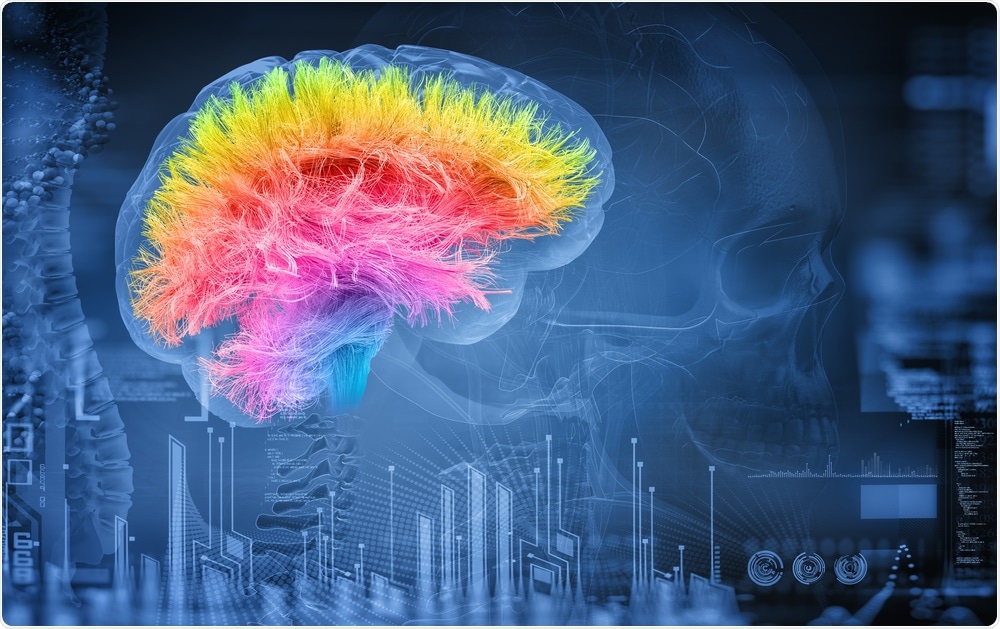The cerebral cortex is important for memory, thinking, attention, and information processing. It is an outer, folded, and comparatively thin “gray matter” layer of the brain.
However, not much is known about the genetic underpinnings that control the size of the surface area of the cortex and also the thickness of the cortex.

Image Credit: adike/Shutterstock.com
Both surface area and thickness have earlier been associated with numerous psychiatric traits, such as autism, attention deficit hyperactivity disorder (ADHD), depression, bipolar disorder, and schizophrenia
For the first time, an additional 360 scientists from UNC-Chapel Hill and 184 different institutions have contributed to a global effort to identify over 200 areas of the genome and over 300 specific genetic variations that impact the cerebral cortex structure and potentially play crucial roles in neurological and psychiatric disorders.
Published in the Science journal, the study was headed by Jason Stein, Ph.D., co-senior author and assistant professor in the Department of Genetics at the UNC School of Medicine; Sarah Medland, Ph.D., a senior research fellow at the QIMR Berghofer Medical Research Institute in Australia; and Paul Thompson, Ph.D., associate director of the Mark and Mary Stevens Neuroimaging and Informatics Institute at the University of Southern California.
A decade ago, these researchers jointly established an international research network—called ENIGMA Consortium—that has brought together an unlimited number of imaging genomics experts to interpret the structure, disease, and function of the brain based on brain imaging as well as genetic data.
This study was only possible due to a huge scientific collaboration of more than 60 sites involved in MRI scanning and genotyping participants,” Stein said. “This study is the crown jewel of the ENIGMA Consortium, so far.”
Jason Stein, PhD, Study Co-Senior Author and Assistant Professor, Department of Genetics, UNC School of Medicine
The scientists analyzed the DNA as well as MRI scans obtained from over 50,000 people to detect 306 genetic variants that control the structure of the brain to get a better understanding of how genetics account for the differences in individuals’ cerebral cortex.
Genetic differences or variants are merely the slight genetic variations that make a person unique. In general, certain variants account for differences, like blood type or hair color, while some variants play a role in diseases. However, a majority of the millions of genetic variants lack a known significance.
That is why it is important to pinpoint the genetic variants related to the structure and size of the cortex. Stein and collaborators regard their novel genetic roadmap of the brain as a kind of “Rosetta stone” that will help interpret how certain genes influence the physical structure of the brain and the neurological consequences for people.
Some of the findings of the study published in the Science journal are given below:
- Certain genetic variants are linked with cortical folding—quantified as the surface area— while other genetic variants are linked with the cortex’s thickness.
- Genes that determine the surface area are associated with very initial development in the fetal cortex, while the thickness seems to be pushed by genes that are active in the adult cortex.
- Individuals with a genetic risk for Parkinson’s disease are likely to have a higher surface area, while individuals with a genetic risk for insomnia or depression are genetically inclined to have a lower surface area
- The huge scale of the study enabled the identification of certain genes that drive the development and aging of the brain in people around the world.
Most of our previous understanding of genes affecting the brain are from model systems, like mice. With mice, we can find genes, knock out genes, or over express genes to see how they influence the structure or function of the brain. But there are a couple of problems with this.”
Jason Stein, PhD, Study Co-Senior Author and Assistant Professor, Department of Genetics, UNC School of Medicine
But one issue is that a mouse is not a human being. There are several human-specific traits that researchers can analyze only in the human brain.
The genetic basis for a mouse is very different than the genetic basis for humans, especially in in the noncoding regions of the genome.”
Jason Stein, PhD, Study Co-Senior Author and Assistant Professor, Department of Genetics, UNC School of Medicine
Genes include the basic human code—DNA. When DNA is translated into action, it produces proteins that “do” things, like help the heart to beat, the liver to process toxins, or the finger muscles to type.
However, only approximately 3% of the human genome is able to code for proteins. The non-coding genome represents the huge majority of the human genome. Humans and mice do not share much of this region. This noncoding genome includes minute molecular switches that can modify the expression of other types of genes.
While these switches do not directly modify the function of a single protein, they can nevertheless influence the amounts of the expressed protein. It turns out that a majority of the genetic variants linked with psychiatric disorders are present in the genome’s noncoding region.
These discoveries can currently serve as a resource for researchers to help find out crucial questions regarding the genetic impacts on the brain and the way they relate to various conditions.
The study’s co-author is Aysenil Berger, Ph.D., director of Psychiatry Neuroimaging Research and director of the Frank Porter Graham Child Development Institute at UNC-Chapel Hill.
The research was financially supported by national and international public and private funding agencies, including the Australian National Health and Medical Research Council, the National Institutes of Health, the Kavli Foundation, and the Michael J. Fox Foundation.
Source:
Journal reference:
Grasby, K. L., et al. (2020) The genetic architecture of the human cerebral cortex. Science. doi.org/10.1126/science.aay6690.